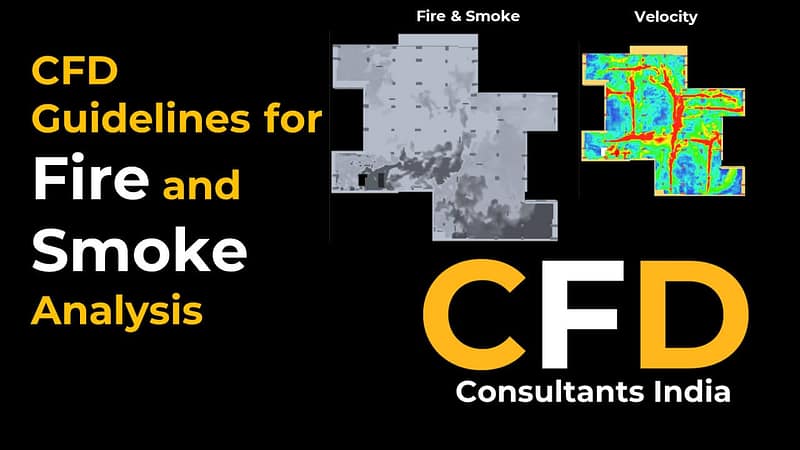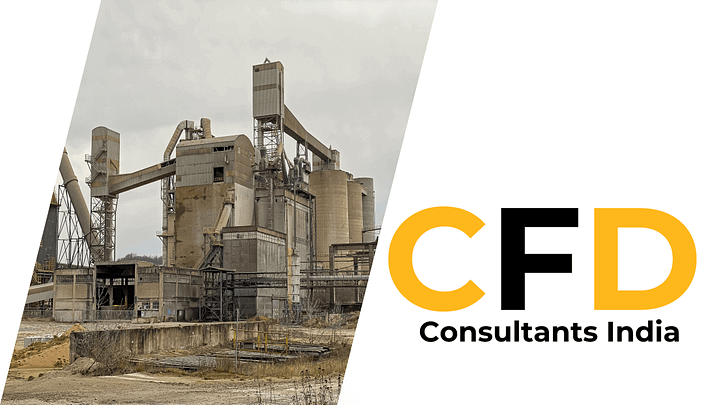CFD Guidelines for Fire and Smoke Analysis

Fire safety is a critical concern in many industries, from designing car parks to the buildings and ensuring the safety of chemical processes. Computational Fluid Dynamics (CFD) plays a vital role in evaluating and predicting the behavior of fire and smoke in various scenarios. To make your fire and smoke analysis using CFD more precise, here are some important guidelines to consider for UAE. There are variation in the guidelines as per country rules and regulation but not much :
1. Determining the Fire Size
The design fire size is a fundamental parameter in fire and smoke analysis. According to the guidelines, it should be based on at least 4 MW for a steady-state fire, which is equivalent to a car fire. For a general goods vehicle, the fire size should be at least 10 MW. Accurately defining the fire size is essential for realistic simulations.
2. Specifying the Type of Fire
Understanding the type of fire allows for accurate modeling and analysis. By default you can consider the fire is of “flaming polyurethane.” This is a crucial detail, as different fuels can result in varied fire behavior.
3. Selecting the Location of Fire
Determining the fire’s location within the simulation is essential. The guidelines recommend placing the fire furthest away from exhaust or discharge points and between zones. This placement should be decided upon by a relevant Professional Engineer or Fire Safety Engineer, ensuring that it represents the most demanding scenario.
4. Accounting for Obstructions
It’s important to consider the presence of down-stand beams and other obstructions within the fire zone. These obstructions can affect airflow and turbulence. In your CFD model, incorporate any obstructions deeper than 1/10 of the floor-to-ceiling height of the volume to account for potential resistance to airflow.
5. Jet Fan Velocity Profile
The guidelines specify the need for a validation model of the velocity profile, particularly for a single jet fan. This data should be compared against physical test data, ensuring the accuracy of the CFD model. The deviation between the CFD profile and the actual test profile should be within 10% for distance, width, and height at various air velocities.
6. Duration of Fire Simulation
The guidelines recommend a minimum duration of 20 minutes for fire simulations. This extended duration allows for a more comprehensive analysis of the fire and smoke behavior.
7. Sprinkler Activation
The model should assume there is no sprinkler activation. This assumption is necessary to evaluate the system’s performance under various conditions.
8. Grid Resolution
The grid size used in the fire model is crucial. In the smoke control zone where the fire is located and its adjacent zones, the grid size should not be larger than 0.2m x 0.2m x 0.2m. For other zones, it should not exceed 0.4m x 0.4m x 0.4m. Alternatively, a grid resolution study can be conducted to determine the appropriate grid size needed for the specific fire size and smoke flows modeled.
9. Sensitivity Study
Conduct a sensitivity study to evaluate the impact of one group of jet fan failure nearest to the fire on the overall effectiveness of the jet fan system. Ensure that, even in the event of such a failure, the acceptance criteria are still met.
In conclusion, these guidelines are essential for conducting effective CFD-based fire and smoke analysis. By following these recommendations, you can ensure that your simulations are accurate, and your fire safety measures are well-informed and reliable.
Author : Mr. Manish Bhasme | LinkedIn

Discover the expertise and services offered by CFD Consultants India, a trusted provider of Computational Fluid Dynamics (CFD) solutions in India.

Explore our journey in the cement industry, where we harnessed CFD simulations to overcome challenges and revolutionize production processes.

Discover the wide-ranging applications of Computational Fluid Dynamics (CFD) across industries such as aerospace, automotive, energy……….
Let's stay in touch!
To get recent updates, stay connect us on our LinkedIn page! Don’t hesitate to reach out to us for any questions, concerns or future collaborations
Contact Us
We are here to help! With just a quick input details we will be able to respond to your inquiry.
E-Mail: info(at)cfdconsultantsindia.com

CFD Consultants India a leading provider of CFD simulation consultation and services. We use finite volume computation technique to predict the flow behavior using various commercial CFD software’s. At CFD Consultants India, we understand the importance of accurate and reliable CFD simulations in the design and development process. With years of experience and expertise in the field, we offer customized solutions to meet your specific requirements and help you achieve your goals.
Whether you are looking to optimize your product design, improve performance, reduce costs, or enhance safety, CFD Consultants India can help. Contact us today to learn more about our services and how we can help you achieve your goals.
© Copyright CFD Consultants India 2023 | All rights reserved.
